How To Get A Tattoo Removed
 The initial tattoo removal consultation is an important moment for every patient and every practice.
The initial tattoo removal consultation is an important moment for every patient and every practice.
It's an opportunity to showcase your knowledge of the procedure, establish rapport with your patient, and gain their trust so they decide to proceed with treatments.
You'll want to answer their questions thoroughly and express your expertise in laser tattoo removal.
We've gathered the most common patient questions about laser tattoo removal for your reference. Anyone that interacts with a patient – from the receptionist to the practitioner – should feel confident discussing these topics.
Looking for a laser tattoo removal treatment? Click here!
1. How much does laser tattoo removal cost?
For most patients, pricing is a big factor in their decision. It's important to have confident yet competitive pricing for your services. We recommend having a clear pricing structure that allows you, the provider, to give a fast and simple answer to the patient's questions about pricing. It's best to have the consultation focused on the value of the procedure, not what you charge.
In general, it costs about ten times as much to get a tattoo removed as it costs to have it applied, so there may be some sticker shock for a handful of patients. For this reason, we suggest that you prominently advertise your minimum price on your website. You should feel confident in your pricing – you are providing a valuable service that requires highly specialized equipment.
Once the tattoo is gone, it's gone forever. If you don't like your tattoo, it's a worthwhile expense.
For many practices,the minimum treatment session price for an extra-small tattoo is somewhere in the $75 - $125 range. Any price in this range is considered a normal minimum price for a single treatment. By having the minimum price stated, it allows patients to have a rough idea of the expected cost before they come into your clinic for their consultation.
Before starting any treatments, it's important to set clear expectations and inform patients that tattoos do take multiple sessions to remove. Doing so eliminates any illusions or confusion they may have about per session pricing being the same as the total cost for complete removal. One way to communicate this effectively and to give patients an opportunity to save money is to sell treatment packages. Selling packages allows your practice to receive revenue upfront and also locks the patient into repeat visits to your practice.
If you're still looking to determine the right pricing structure for your practice, check out our blog post: Pricing for Laser Tattoo Removal Treatments.
2. How long will it take to remove my tattoo?
 The duration of the tattoo removal process is a concern for virtually all patients.
The duration of the tattoo removal process is a concern for virtually all patients.
Some patients may wish to remove a visible tattoo before an event – such as their wedding or enlisting in the military. It's important to establish upfront that tattoo removal is a process that relies on the body's ability to eliminate ink from the skin.
It's not unusual for the body to take over a year to completely eliminate ink. Setting expectations clearly upfront allows patients to be satisfied throughout the experience – rather than feeling as if they were misled.
To allow the skin enough time to heal between treatments and the body's immune system to flush away ink, we recommend a minimum of six weeks between laser sessions – and eight weeks for darker complexions. Stacking the treatments too close together can cause damage and permanent side effects to the skin and doesn't allow the body enough time to remove the ink that was shattered at the most recent session. For ideal results, we recommend waiting three months between treatments.
Ultimately, as a tattoo removal practitioner, you cannot know precisely how many treatments a tattoo will need to be fully removed. However, you should assess the patient's tattoo for how easily it should remove.
We generally suggest speaking in terms of treatment ranges with patients. Tattoo removal treatments fit along a bell curve – most patients will need between fine and eight treatments, some will see complete removal in three or four, and others may need 10 or more treatments if there is significant scarring or layered tattoos. We suggest telling patients where they are likely to fit along the bell curve based on the unique factors of their tattoo. 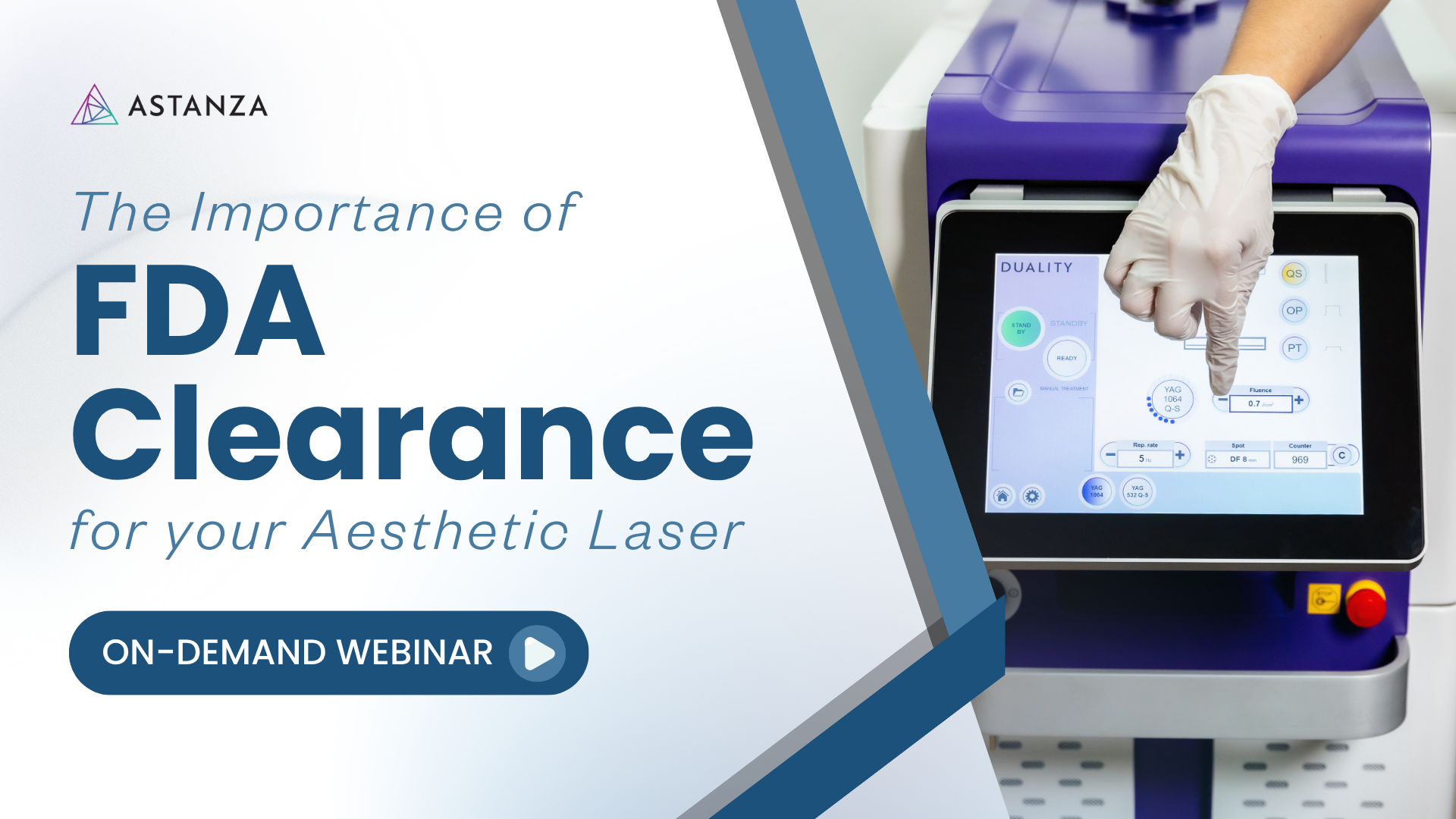
The speed of removal depends on the patient and their tattoo.
The Kirby-Desai scale is a popular and well-regarded tool for analyzing the number of treatments a tattoo will need for removal. The scale accounts for the following factors that affect the rate of removal:
- Fitzpatrick skin type
- Tattoo layering (if the tattoo is a cover-up)
- Location on the body
- Ink colors
- Amount of ink (vividness of tattoo, if it was professionally applied)
- Pre-existing scarring
The Kirby-Desai scale was published in 2009, and technology has improved since then to remove tattoos, but it continues to be an excellent tool for assessing where a patient stands on the bell curve. There are also other factors, such as patient health, that affect the speed of removal. If a patient is young, physically fit, and has a strong immune system, they will tend to see results faster than an older, obese patient with health problems. Encouraging patients to exercise, drink ample water, and massage thetreated area (once healed) are good aftercare tips to share with patients looking to get the best results.
Technology plays an important factor in the rate of removal. The Astanza Trinity is the most powerful multi wavelength laser system on the market – no other system can match its high peak power across three wavelengths. Interested in learning about laser wavelengths for achieving results? Check out our blog post: Why Wavelengths Matter for Removing Tattoos.
3. Does tattoo removal hurt?
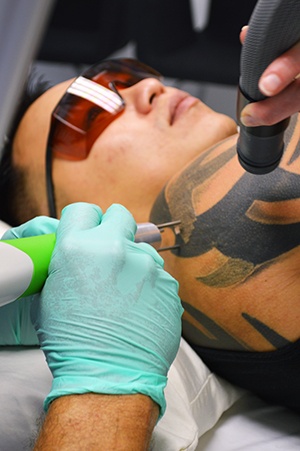 Laser tattoo removal typically does involve some level of pain. That said, many say that it hurts less than they expected.
Laser tattoo removal typically does involve some level of pain. That said, many say that it hurts less than they expected.
It's a common belief that tattoo removal is excruciating, yet most patients say that the sensation of removal is comparable to having a tattoo applied. Common descriptions include the sensation of a rubber band snapping against the skin or bacon grease – basically it's uncomfortable but bearable.
It hurts, but it's bearable.
When discussing pain with patients, it's important to share that while they may experience some level of discomfort, the pain is relatively manageable and tolerable. It may take some tough love to encourage patients concerned about sensitivity.
The vast majority of tattoo removal providers offer some form of soothing to the skin during the treatment. Offering skin numbing during the procedure allows your practice to stay competitive, provide better patient care, and have higher patient satisfaction.
Offer skin numbing to keep patients feeling happy.
The most popular numbing method is a Zimmer Cryo 6, which is a powerful chilling machine that blows cold air on the skin before, during, and after treatments. It's highly effective and an asset to busy practices that need a solution that is fast and easy-to-use.
Other options for numbing include good old-fashioned ice packs, lidocaine injections, or topical numbing creams. Each numbing method has its pros and cons. We have a blog post dedicated to the topic of pain management for this procedure: Skin Numbing for Tattoo Removal Treatments
4. Will it leave a scar?
Many patients are concerned about scarring from laser tattoo removal – they understandably want their skin to look as natural as possible after they've completed the tattoo removal process.
If the tattoo already features scarring, expect that to remain.
What many people don't know is that any scarring that remains after a tattoo removal procedure is often left over from when the tattoo was originally applied by the tattoo artist.
When the proper laser protocols and patient aftercare are utilized, it's very uncommon for a patient to scar from a Q-switched laser treatment. However, it is very common for a tattoo to feature pre-existing scarring from when it was applied.
When a Q-switched laser treats the skin, it targets and breaks down the tattoo pigment in the skin. If pre-existing scarring is present, it will break down this pigment within the scar tissue. Once the tattoo removal process is complete, the ink will have been eliminated from the location but any of the scarring from the original tattoo will likely still remain.
During the initial consultation while you are assessing the tattoo, touch it and see if pre-existing scarring is present. If so, mark it as such in the patient's records and inform the patient that the laser will not eliminate scar tissue, just their ink.
A Q-switched laser is not the best device to use for scar revision and will not provide significant improvement to remaining scarring. Some skin specialists use fractional lasers (such as fractional CO2 or an Erbium:Yag laser like the Astanza DermaBlate) to resurface scarred skin after the tattoo removal process.
Improper aftercare or incorrect protocols pose a risk.
While it is uncommon to cause scarring from the laser tattoo removal sessions themselves, it is still possible. For example, if you use excessive fluence when treating a tattoo and cause unwanted side effects (such as immediate pinpoint bleeding), scarring may occur.
Another risk for scarring, even if the treatment is performed properly, happens when patients fail to follow aftercare instructions. Blisters and scabs are common side effects that are important in the tattoo removal healing process. However, picking scabs or not caring properly for blisters can allow scarring to happen.When discussing aftercare with your patients, make sure to emphasize their role in the outcome of their tattoo removal.
There are also some patients that may have a history of keloids and may be predisposed to scarring, which is why it's important to take a detailed medical history of each patient.
Scarring from tattoo removal is highly unusual.
Reassure your patients that you use proper protocols and a professional-grade system that is safe for their skin. Ultimately, as a practitioner, you'll still want the patient to sign a consent form addressing the risks of the procedure and promote a strong emphasis on personal aftercare outside your practice.
5. Can you help me revise this tattoo?
Every tattoo removal practitioner will encounter patients that don't want their tattoos removed completely, but ratherrevised. Yes, you can provide support to patients looking for tattoo revision.
Anyone that is a candidate for tattoo removal liked tattoos enough to get inked at one point in their lives. As a practitioner, you'll want to be sensitive to this and not assume which tattoo a patient wants removed or whether they want complete removal at all.
Never judge a patient for their tattoos.
We always suggest starting out the patient consultation with the question, "Which tattoo are you looking to treat today?" This question allows the patient to tell their story about their tattoo and discuss their intentions for coming to you.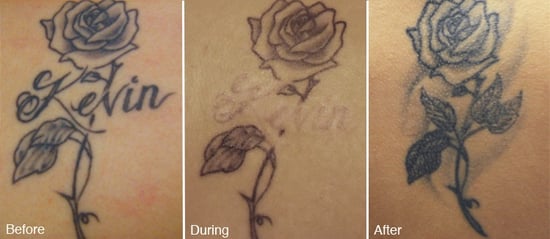
Patients that want their tattoo artwork revised fit into two categories:
- Selective removal
- Fading prior to a cover-up
Selective removal patients are looking to erase a part out of a larger tattoo piece. This is a common request for patients with name tattoos. For example, they like the overall design of their tattoo but dislike that it features an ex-boyfriend's name. Patients also request selective removal if their tattoo artist botched the artwork in an area or the tattoo extended further than they wished – they just want certain parts of the tattoo "cleaned up." When performing treatments for selective removal, you likely will need precision to only treat the areas of the tattoo that are desired to be removed – usually firing the laser at lower repetition rates will help when treating these specific areas.
Generally, selective removal patients want complete removal of the specific areas they want erased, but sometimes they want it faded in preparation for a cover-up tattoo.
Cover-up patients only want their tattoo faded down to make it easier for their tattoo artist to design a tattoo to be drawn in its place. Tattoo fading needs fewer sessions than complete removal. Often 2 to 3 laser sessions are adequate to fade the tattoo significantly and allow the tattoo artist to have a better canvas to work on.
Know the well-regarded tattoo artists in your area.
Having established relationships with local tattoo shops will be a great asset to your practice. Not only will you likely get patients referred to you by the tattoo shops, you'll also feel confident referring patients to artists that provide quality work for cover-ups, touch-ups, and revisions.
6. Are there side effects?
Side effects are to be an expected part of the tattoo removal process for most patients. In fact, some side effects are an important part of the immune response that helps eliminate ink from the skin.
All patients should expect some level of side effects.
We encourage practitioners to not gloss over side effects during the initial consultation – explain the various side effects in full detail. This way, when your patients commit to the tattoo removal process, they're informed and aren't shocked the next day when their skin is sensitive and they are potentially limited from their normal activities or clothing.
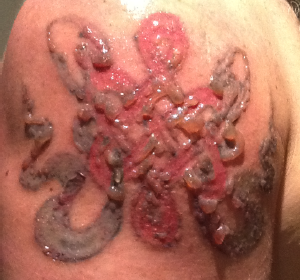 The most common side effects are:
The most common side effects are:
- Redness
- Tenderness
- Swelling
- Blistering
- Scabs
- Bruising
- Hyperpigmentation
- Hypopigmentation
If all of the proper protocols are used based on the tattoo and the patient's skin tone, all of these side effects are temporary.Redness, tenderness, and swelling typically subside within a day or two following treatment. Blisters usually appear within 24 hours of treatment; sometimes the blisters are very large and may look alarming – this is completely normal. Scabs, bruising, and blistering may take up to a week or longer to heal.
Hyperpigmentation and hypopigmentation occur when the body's production of melanin is skewed after a laser treatment. With hyperpigmentation, the body overproduces melanin in reaction to the laser treatment, so skin in the treated area is darker than the natural skin tone. With hypopigmentation, the melanin is depleted by the laser treatment and the skin appears bleached. Both hypopigmentation and hyperpigmentation are typically temporary and resolve naturally with time. Patients with middle to darker skin tones are at the greatest risk for pigmentation changes and should avoid sun exposure the weeks following each treatment.
For patients with pigmentation issues, do not treat at the regular treatment intervals – wait until the area has returned to its normal skin tone before treating again. The main risk for permanent pigmentation changes is if the practitioner continues to treat an affected area too aggressively. Even from the start, it is important to treat darker skin tones conservatively – using wavelengths that have less absorption by melanin and reduced fluence levels.
Patients are generally more concerned of permanent side effects than temporary ones; the side effects that could be permanent are scarring or pigmentation changes. All permanent side effects are completely avoidable if the proper protocols and aftercare are used.
Discuss side effects and aftercare together.
We encourage practices to discuss aftercare during the consultation, have aftercare posted clearly on the website, and give patients a take-home sheet of aftercare instructions. Much of the aftercare for a tattoo removal treatment are similar to that of aftercare after having a tattoo applied, so patients should be familiar with it.
7. How does laser tattoo removal work?
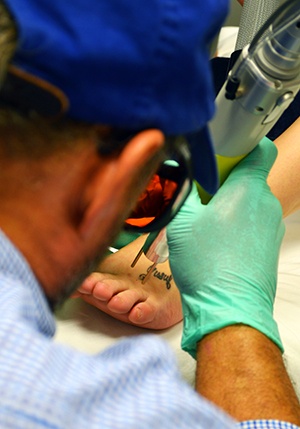 Honestly, this is one of the least common asked questions on this list. Most patients are concerned about the results – not how the laser achieves them. That said, discussing the science behind laser tattoo removal should still be an important part of the patient consultation.
Honestly, this is one of the least common asked questions on this list. Most patients are concerned about the results – not how the laser achieves them. That said, discussing the science behind laser tattoo removal should still be an important part of the patient consultation.
Introduce the discussion of this topic, even if the patient doesn't.
Many patients have the misconception that the laser "burns" the tattoo ink out of the skin. By discussing how tattoo removal works, you can help patients appreciate the role that the laser (and their body) has in eliminating their unwanted tattoo.
We suggest having a simplified answer such as this:
"Each pulse of the laser sends light energy into your skin. We use different wavelengths of laser light to treat different colors of ink in your tattoo. As the light energy is directed into your skin, it is selectively absorbed by the tattoo ink particles trapped in the dermis of your skin. When the ink particles absorb this energy, they instantly shatter into tiny fragments. Once the laser has broken the ink into smaller pieces, your body's immune system works to remove the ink over the following weeks, flushing it away from the tattooed area. We see the result of this as the tattoo lightening in appearance. Each additional laser treatment breaks down more and more ink until the tattoo can no longer be seen."
This description achieves a few things:
- It gives a basic understanding of the tattoo removal process
- It describes the roles that both the laser and the immune system have in achieving results
- It discusses how you customize the treatment based on their unique tattoo
- It explains why it takes time for the ink removal to occur
Informed Patients are Happy Patients
We've seen that if a patient is informed, they're more likely to continue with treatment until completion, handle side effects properly, and be satisfied with their tattoo removal experience.
When patients understand the basics of laser-skin interaction, they know that you are a knowledgeable practitioner with a powerful tool – but not a magician. Expectations are realistic – so patients are encouraged by the fading along the way and pleased with the end result.
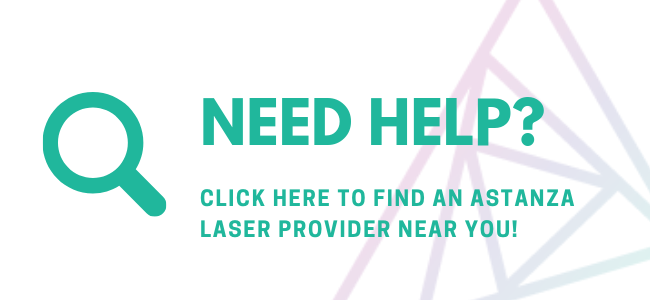
Learn More
Check out these other resources from Astanza:
- Patient Share their Tattoo Removal Experiences [Video]
- How to Price Laser Tattoo Removal Treatments
- Marketing Tips for Attracting Tattoo Removal Patients
- Astanza Tattoo Removal Before & After Photos
How To Get A Tattoo Removed
Source: https://info.astanzalaser.com/blog/7-most-frequently-asked-questions-from-tattoo-removal-patients
Posted by: burchpardisturn.blogspot.com

0 Response to "How To Get A Tattoo Removed"
Post a Comment